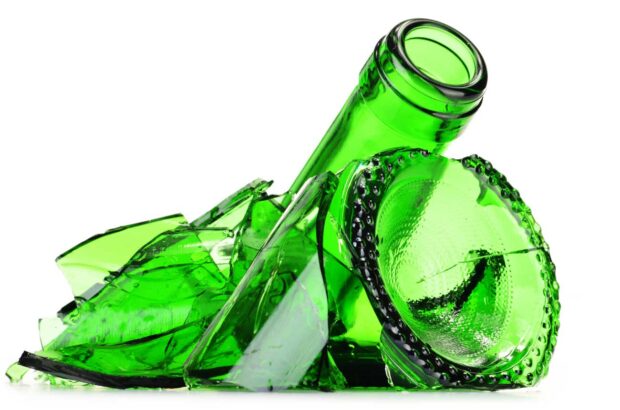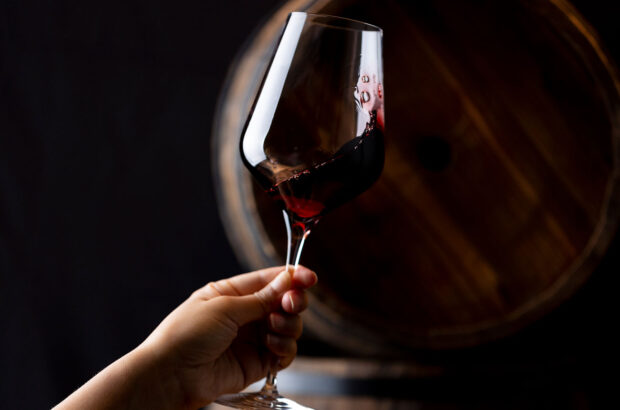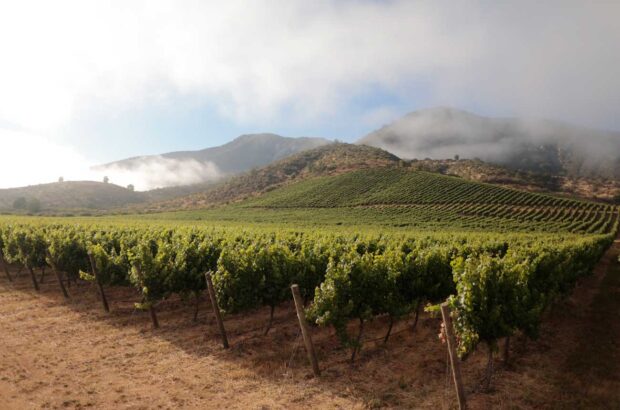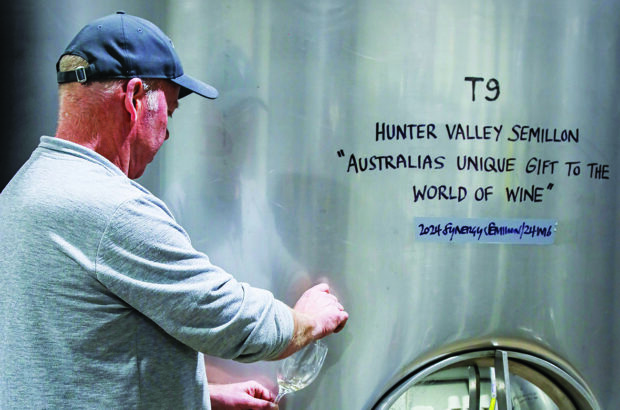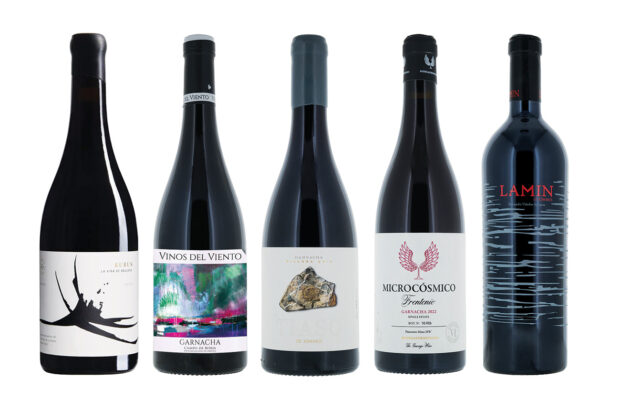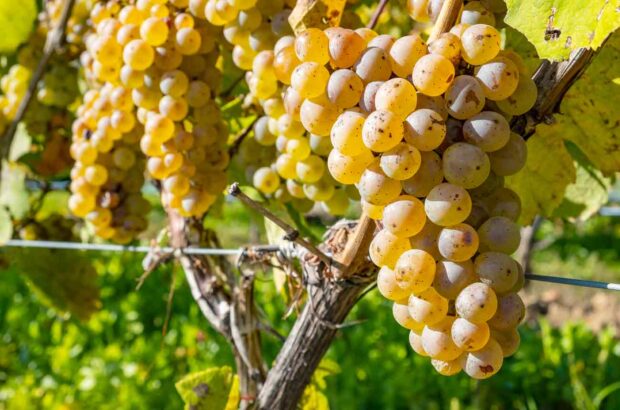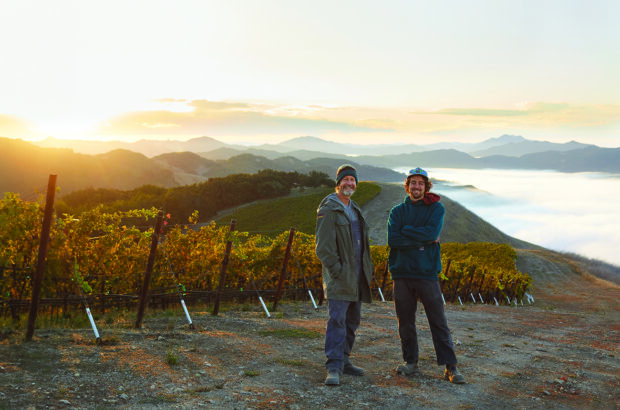Passengers gasp as Mount Etna comes into view. The world’s most active stratovolcano is puffing merrily as the plane circles near it before landing in Catania on Sicily’s east coast. It dominates the landscape, rising to about 3,350m, with a circumference at the base of about 150km, old lava flows scarring the mountainside in multiple places.
You sense the volcano everywhere you go – from the dialled-up flavours of the produce to the black dust on your shoes (a little tip: don’t wear white trainers) after a walk on its slopes. And you taste it in the wines, which display an impressive sense of place, fascinating all who taste them.
Making wine here certainly isn’t for the faint-hearted. The terroir changes constantly, with every belch of black ash, which happens continually. Consequently, there are now 142 contradas (comparable to the lieu-dit or cru in France), wrapped around the mountain in a horseshoe shape, each defined by elevation and climate, and by the individual lava flows that have swept across the soils.
Winemakers here are quick to highlight this unique terroir. They point out the cool nights and warm days, the intense sunlight and the old, higher-elevation vineyards, which are largely bush ‘alberello’ trained, with some even ungrafted and pre-phylloxera vines. Combine that with the largely native varieties grown here – with tough little Nerello Mascalese leading the lighter-style reds and Carricante making up the bulk of the intense, signature whites – and it’s easy to understand why Etna has become catnip for wine lovers.
Now throw in an influx of smart new accommodation, some offered by the wine producers themselves, and a cuisine that thrills thanks to Sicily’s many historical invaders, plus newly tarmacked roads (thanks to earlier damage from eruptions) just an hour’s drive from Catania, and Etna is an exciting new destination for the wine tourist.

Credit: JP Map Graphics Ltd
Life amid the lava
Part of Etna’s attraction is its otherworldliness, with lunar landscapes and wildly unpredictable weather. Volcano-battered, black stone-built towns and villages cling to Etna’s slopes and, between the strips of hardened lava, the landscape bursts with life. In spring – the best time to visit – abundant yellow broom pops against the black earth, as vines awaken on steep terraces carved out high on the mountainside, set among oak and chestnut forests, hazelnut and apple trees, wild flowers and fragrant herbs. There’s a palpable energy that radiates from the mountain itself and from the people who live and work here.

Anna Martens harvesting Vigna Nave at 1,100m on the northeast face of Mount Etna. Credit Hesh Hipp
‘We can feel that energy in the wines,’ declares Eric Narioo during a tour around his Solicchiata cellar, where he makes organic wines under the Vino di Anna label with his wife Anna Martens. Natural wine fans might recognise his name – he’s the French-born owner of Guildford-based wine merchant Les Caves de Pyrene, which put natural wine on the map in the UK. He was also among the first to bring attention to Etna more than a decade ago, when the pair first rocked up here. ‘The healthy growing conditions and high altitudes have made farming organically less challenging than in more humid parts of the world,’ Narioo explains, showing off the qvevri they use for ageing and macerating, and the old palmento – the traditional stone building in which wine was made in Sicily, with a permanent system of stone-cut containers and channels for foot-treading of the grapes and gravity-feeding of the juice into the fermentation and ageing vessels. Today, the use of palmenti has been officially abandoned – declared too unhygienic by Brussels bureaucrats.
My perfect day on and around Mt Etna
Morning
Start the day with a stroll through the chestnut forest on the edge of Linguaglossa, winding your way up the hill along a gravel road for breathtaking views over Mount Etna and the north wind-buffering Nebrodi mountains to better understand the area’s unique climate. Stop by 1939-established Barone Pasticceri for an espresso and its famous almond biscuits, ordering extra to take home. Return to Palazzo Previtera for a cookery class of up to three hours with family cook Angela, to learn how to make dishes such as local pasta maccheroni dressed with a sauce made of garden-plucked veg.

Cookery course at Palazzo Previtera. Credit: Fabio Florio
Lunch & afternoon
Scoff what you’ve cooked on the palazzo’s jasmine-scented terrace, which overlooks the volcano in all its puffing glory, grabbing a glass to match from a bottle plucked from the shelves of well-stocked Linguaglossa wine shop Il Vino della Rosa, which focuses on smaller Etna producers. Either arrange a taxi or drive the half hour to lauded Etna producer I Vigneri along the upper scenic route to Milo on the volcano’s eastern slopes, winding through verdant chestnut and oak forests on one side, the Med shimmering on the other. This is where father and son team Salvo and Simone Foti nurture indigenous grapes grown up to 1,300m and produce beautifully crafted wines, some made using a traditional palmento, which operates as the tasting area when not in use.
Evening
Start off at Linguaglossa local Bar Le Palme (see Facebook) with ragu-filled arancini (the best around, many say), then walk two minutes to legendary butcher-cum-bistro Dai Pennisi, which makes a feature of curing meats and making meatballs using cuts from (Slow Food star) Nebrodi black pigs. Select first from the counter and then cruise shelves lined with an impressive selection of Etna wines.

Dai Pennisi
Major names
Winemaking isn’t new to Etna, of course. In fact, it was the birthplace of wine in Sicily and once the island’s biggest grape-growing region, the wine largely transported in bulk up north to boost production in pre-regulation days. Modern Etna, as we know it today, was pioneered by Dr Giuseppe Benanti, a pharmacist who founded Tenuta di Castiglione in 1988 with a mixture of owned and rented vineyards. A decade later, the estate took on the family name and became the first Etna winery with a presence on all of the volcano’s slopes. Although Benanti worked with international varieties, his passion was for native grapes, a passion that has since spread across the region. Other Etna pioneers include Alberto Graci, Andrea Franchetti and Belgian wine-broker-turned-winemaker Frank Cornelissen, in the neighbouring village of Passopisciaro, where we head next.
Cornelissen wins the prize for most expensive Etna wine, Magma, which can retail for up to £330 per bottle. His winery is surprisingly modest – a bit like the man himself – using fibreglass tanks, which work well for his minimal-intervention approach. Visitors get to try up to five wines and are escorted on a tour of one of Cornelissen’s old-vine vineyards (by appointment only).
Food as a feature
In response to the increasing interest in Etna’s wines, many wineries have upped their tourism game in the last decade. The number of producers in the Etna DOC has more than doubled since it was founded in 1968 (as Sicily’s first), numbering 442 at the last count. At Terrazze dell’Etna, just above the atmospheric medieval town of Randazzo, a 25-minute drive from sleepy Linguaglossa, visitors can book for a ‘sunset aperitif’, held every Saturday throughout the peak season from June; and last year it added five bedrooms for vineyard stays, with a comprehensive two-hour tasting conducted by trained sommelier Daniela D’Amore.
Nearby, at swanky Napa-style Palmento Costanzo, food is a priority, driven by wine-loving matriarch Valeria Agosta. Here, the local butcher’s finest is cooked up in the smart winery restaurant to pair with its elegant wines (by prior arrangement only: package details and contacts via website), with a stylish new apartment set among the vines available to retreat to after.

Palmento Costanzo. Credit: Winery Tasting Sicily
Just 10 minutes away, Donnafugata also makes food a feature for visitors. The Marsala-based company is typical of Sicilian wine’s big players that have realised their ambition to include Etna in their portfolio. This year, it added a chic new tasting room overlooking Etna’s rugged slopes and smoking crater beyond, where visitors can try small plates of local dishes matched with their wines in a spirited tutored tasting.
While there are 89 contradas concentrated on the northern slopes that include many of the top producers and most of the best reds, it would be a mistake not to include a visit to the more sea-influenced producers on the eastern and southern slopes, which are more easily accessible from Catania if your time is short. Barone di Villagrande and Murgo are well versed in hosting visitors, each offering several bedrooms in which to stay, with a full program of tours and restaurants with practised menus paired with their wines. And yes, the volcano is still within majestic view – always the star of the show here, as it should be.
How to get there from the UK
Easyjet flies to Catania from London Luton and Gatwick up to 16 times a week, with fares from £24.99 one way.
Your Etna address book
Accommodation
A visit to the Etna region isn’t complete without a stay in Taormina and this is the grande dame – the first hotel to open in this dazzling hilltop town originally swooned over by painters and poets, and now by food and wine lovers, just over half an hour from Etna’s wine country. Luxury with bells on, and boasting some of the best views of Mount Etna, it also offers the fruits of a wine collaboration with prestigious producer Pietradolce.

Belmond Grand Hotel Timeo. Credit: Mattia Aquila
A wine estate to beat them all, with its elegant pool villas and rooms set among the vines growing on steep terraces on Etna’s southeastern slopes near Sarro village. The brainchild of owner Guido Coffa, it delivers a luxury agriturismo concept, with its large kitchen garden and locally sourced menus from chef-to-watch Salvo Sardo, and arguably the best Etna wine list in its Nerello restaurant.
It has taken Alfio Puglisi and his parents (architect mum, civil engineer dad) 10 years to renovate this 1649-built, walled garden-set family palazzo in the sprawling town of Linguaglossa on Mount Etna’s northeastern slopes. It’s bold and breathtaking, cleverly combining contemporary art with intriguing heirloom pieces.
Restaurants
Be one of 16 guests dining right on the water’s edge of this iconic Taormina seafront hotel, Belmond Villa Sant’ Andrea, and enjoy the region’s best fish on a tasting menu from chef Agostino D’Angelo, paired with wines from a comprehensive Etna wine list that now includes wines aged under the sea in a new venture with veteran Etna producer Benanti.
Drive through the old lava flows until you reach this Sicilian hotspot on the higher reaches of the volcano, above Randazzo. At the weekends, the cavernous dining space fills with families, who come for the excellent homemade pastas (try the ‘olive-leaf’ shaped pasta with local king trumpet mushrooms) and wood-grilled meats, with most Etna wineries represented.
Trattoria Linguagrossa
+39 320 864 9723
Ask anyone for the best restaurant on Etna and many will direct you to this modest-looking spot in downtown Linguaglossa, which hides a certain talent in the kitchen and serves up polished traditional dishes such as baccalà alla ghiotta (salt cod with capers, pine nuts and olives), with a fine cellar to choose from.
Shopping
I Perivancu
This treasure trove of a food shop in the bustling town of Viagrande at the bottom of Etna’s eastern slope has been trading since 1926, sourcing regional specialities that you’re unlikely to find elsewhere, from cured meats to condiments.
Head to this wine shop-cum-bar and purveyor of Sicilian foodstuffs on a cobbled street in Randazzo, and let manager Giovanni guide you through the region’s quirkier winemakers as you sip at a pavement table.
Randazzo market
Rub shoulders with locals at Randazzo’s sprawling weekly Sunday morning market, which takes place on the edge of town, the crater looming above. Buy local cheeses, meats and Etna honey to take home, and then try Sicily’s best granita at Pasticceria Santo Musumeci.

A selection of local cheeses at Randazzo market.
Credit: Ruslan K Photo / Shutterstock



